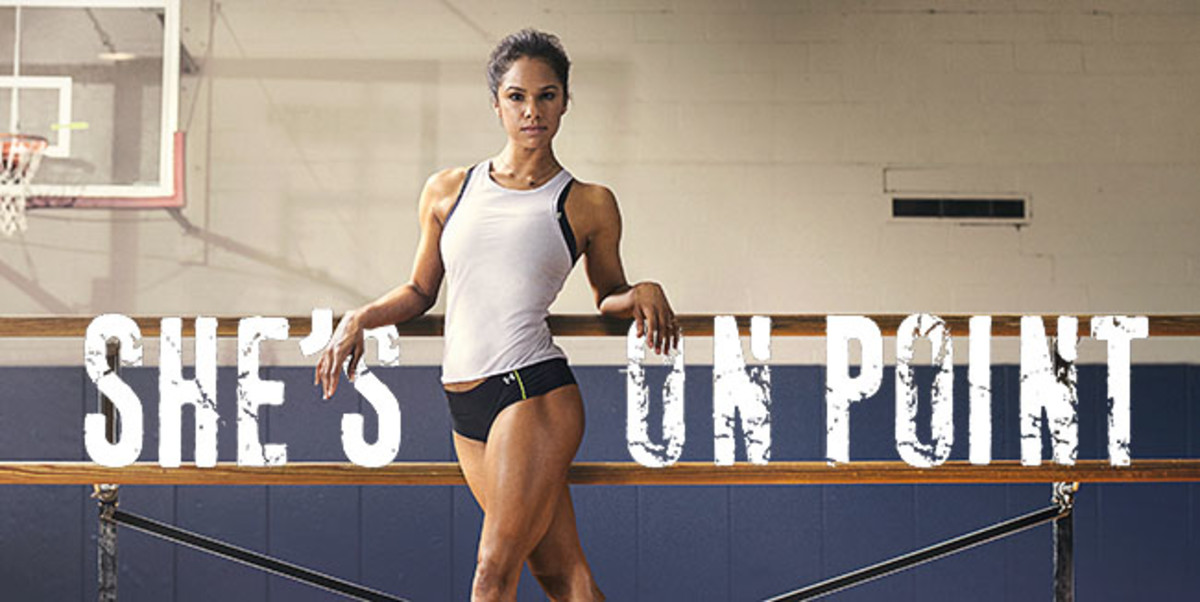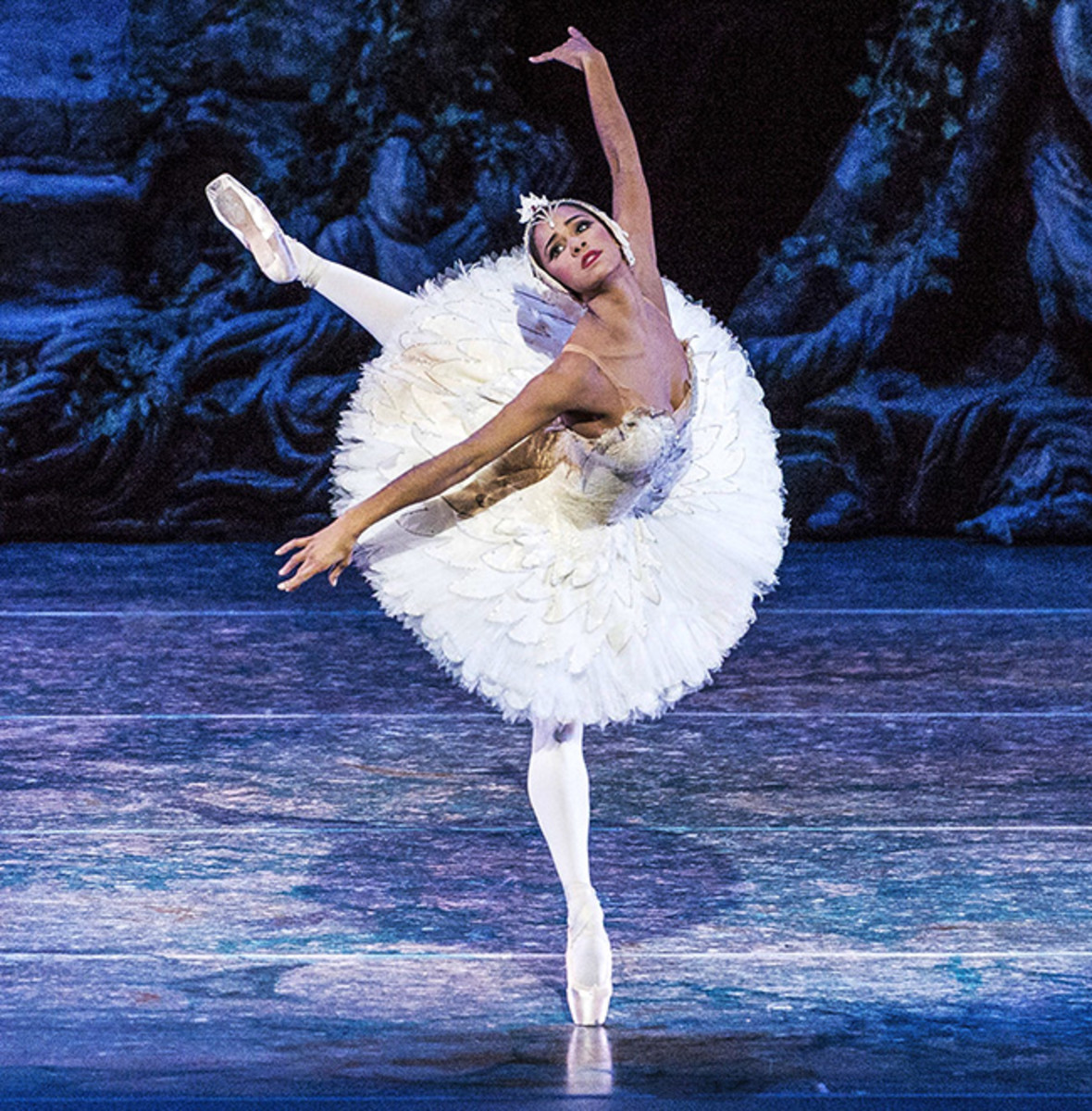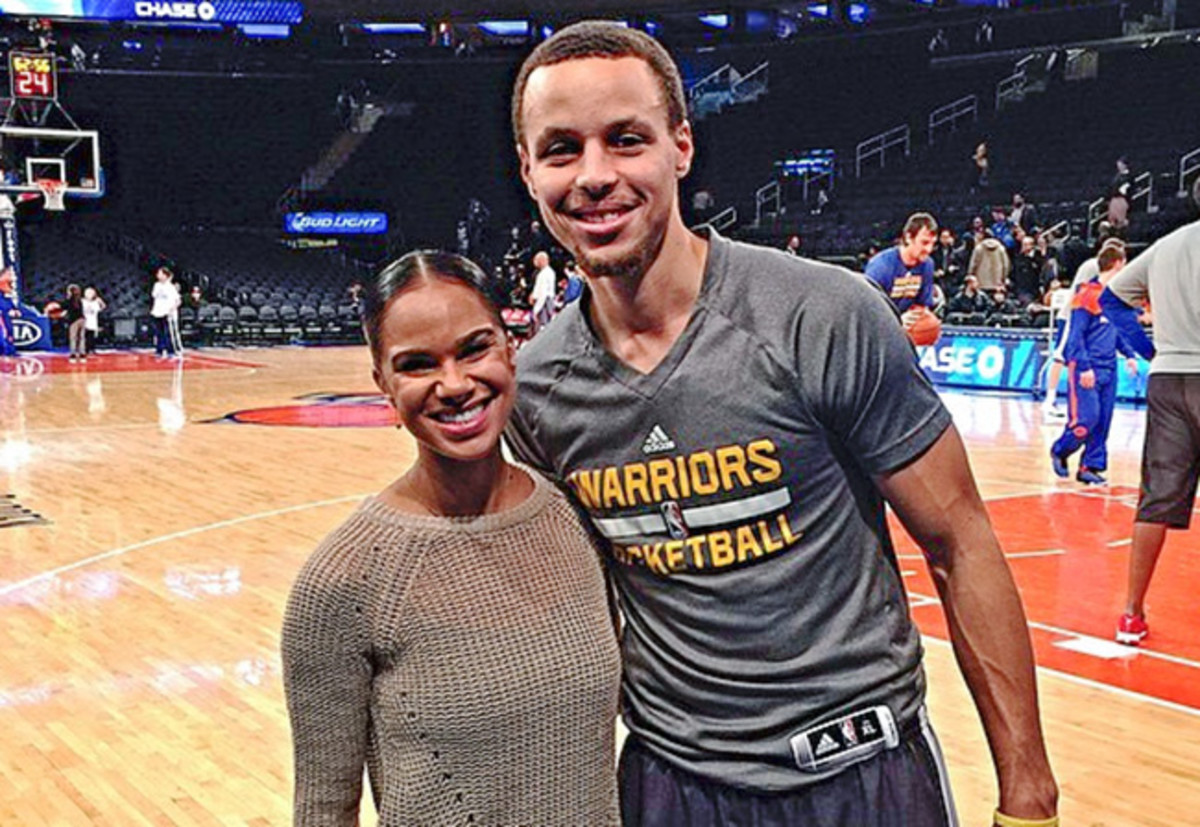Misty Copeland is Changing the Way We Think About Ballet Dancers


A mid a flock of dancers overtaking the stage at New York's Metropolitan Opera House this past May, a feathered Misty Copeland emerged in a red unitard, displaying bountiful energy and allure. It was opening night of the American Ballet Theater's spring season, and Copeland was starring in the title role of Firebird, the story of a legendary creature who helps two lovers defeat an evil wizard. As the magical tale unfolded, Copeland put on a dramatic display of leaps, twirls, and flexibility. It ended with thunderous applause from the audience.
Firebird is an outstanding piece of work, powered by Copeland, who last year became the first African-American female principal dancer in ABT. She knows how to put on a show. Experiencing a Copeland performance is like witnessing a star athlete in his or her element. She exudes the kind of athleticism you see in Serena Williams and Elena Delle Donne, and she also displays a grace that quarterback Russell Wilson, known for his poise in the pocket, would envy.
Ballerinas, by mainstream standards, are not considered athletes. Copeland, however, is challenging the way they are viewed. They are more than just dainty dancers, tasked with executing delicate twirls and nimble jumps. Sure, that's the stuff that ballet is made of. But make no mistake — the effortless and majestic look of ballet is backed by focus, endurance, and grit. These are qualities that fueled the 33-year-old's rise to the top of ABT's roster. "What ballerinas do is extremely athletic," Copeland says. "But we don't have the pleasure of grunting through it, or not caring about what we look like when we perform."
Pirouettes and all, Copeland is not only inspiring ballerinas-in-the-making, but also competitors in traditional sports. "I recognize the same laser focus that all successful athletes have in her," Olympic gymnast Gabby Douglas says. "She is truly a great role model."
A LATE START
Copeland, who was born in Missouri, grew up in a sports-loving family in California. Her five siblings played sports, and her mom is a former Kansas City Chiefs cheerleader. The family would often gather around the television to watch basketball and football games.
"My favorite team was the Phoenix Suns, mostly because my favorite color was purple," recalls Copeland, who also watched Chiefs and Philadelphia Eagles games. "But I didn't enjoy the chaos [sports] brought. I was such a shy child growing up. So really, I was meant to be in ballet. I love how calm and soothing it can be."

Copeland discovered calmness in gymnastics — a sport that borrows from ballet — thanks to a movie about five-time Olympic gold medalist Nadia Comaneci.
"I was seven when I saw the movie. Her story stuck with me — her struggles with body image and success," Copeland remembers. "I would go outside and mimic some of her moves. I'd finish with my arms raised just like a gymnast." Copeland didn't enroll in gymnastics classes, but watching the film's reenactment of Comaneci's floor exercise routines offered a glimpse into the type of movement she wanted to emulate. "It was the closest thing I had seen to classical dance," she says.
Copeland took her first ballet class in gym socks on the basketball court of the San Pedro California Boys & Girls Club six years later. In the ballet world 13 is a late start, but Copeland caught on quickly. At 15, she won first place in the coveted Music Center Spotlight Awards. Her studies at the San Francisco Ballet School and American Ballet Theatre's Summer Intensive earned her ABT's national scholar award in 2000. A year later she joined ABT and was named soloist in 2007, when she was 24.
Her career is full of physical rigors. A typical day includes a 90-minute dance class in the morning followed by seven hours of rehearsals. "Ballerinas train just as hard as, or harder than, any athlete. There is a lot of wear and tear on the muscles and body," she says. "If you take a ballet class, you feel it immediately."
TOUGH AS NAILS
In 2012, Copeland found out just how taxing ballet had been on her body when she discovered she had six stress fractures in her left leg. It was a devastating blow. "I was told by a lot of dance doctors that I would never dance again," she says. But just like many athletes, Copeland fought her way back to health. She had surgery in which doctors placed a metal plate in her shin. Copeland's recovery included floor barre classes, a program that focuses on classical ballet moves while lying down. She returned to the stage in 2013.
Her ability to bounce back from injury is just one example of Copeland's fight. She battles and breaks ballet norms too. "I was told I had the wrong body type, to lose weight, that I had to lengthen because I was too muscular," the 5'2" dancer wrote in her 2014 autobiography, Life in Motion: An Unlikely Ballerina. Copeland also navigates a profession that doesn't have a lot of ballerinas of color. She was only the second African-American female soloist in ABT, which was founded in 1940.
Despite it all, Copeland thrived, finally earning that historic promotion to principal dancer at one of the most prestigious ballet companies in the world.
"Working hard is always the answer. Hard work will get you where you need to go, not just looking a certain way," she says.

Copeland sees her story, and that of friend and back-to-back NBA MVP Steph Curry, as proof. Curry, the lanky Golden State Warriors guard, didn't let his size slow him down. "Steph just gets better and better. I recently did an interview with President Obama. The moderator asked us if Steph is the best player ever to play. I think he's on his way," she says. "He can shoot and walk away before the ball goes in the basket. It's so insane!"
Copeland and Curry are brand ambassadors for the apparel company Under Armour, which launched a motivational "I Will What I Want" campaign that included the dancer last year. There have been more than 10 million YouTube views of her commercial, in which she shows off a powerful display of strength and finesse. "Athletes and dancers," Copeland says, "are both fighters."
Her fighting spirit is a source of empowerment for Douglas, the 2012 All-Around Olympic gold medalist. "Misty's perseverance speaks volumes and encourages me to keep pushing forward toward my dream of making another Olympic Team," Douglas says. "Knowing her story — how she had to draw on her internal strength so that she could reach for her dream in the face of obstacles and setbacks — encourages me to keep reaching for mine."
Photos: courtesy of Under Armour (portrait), Darren Thomas/EPA (ballet), Instagram (Copeland and Curry)
